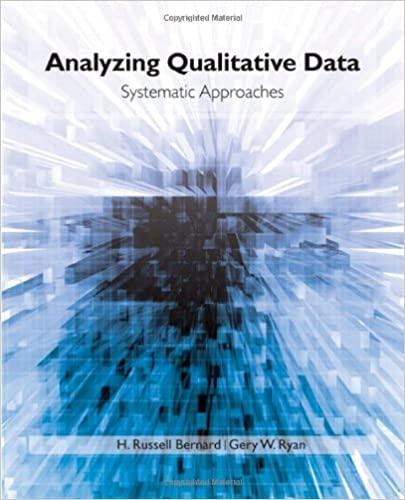Question
Job shadowing and observation are important tools to build understanding for any profession. They are particularly important for the field of education because there are
Job shadowing and observation are important tools to build understanding for any profession. They are particularly important for the field of education because there are so many professional nuances learned on the job. Often, a significant portion of the special education teacher's job is spent collaborating with the paraprofessionals they supervise and the other support staff and service providers who work with their students to best meet their needs. While special education teachers provide overall direction and coaching to the paraprofessionals, they must collaborate with and seek input from support staff and service providers inscheduling activities and meeting students' individual needs (bathroom breaks, feedings, administration of medication, etc.).
Allocate at least 2 hours in the field to support this field experience.
In a Grades K-12 classroom for students with moderate to severe disabilities taught by a certified special education teacher, interview and observe the classroom teacher, paying special attention to the collaboration and communication with support staff and service providers.
Address the following in your interview with the mentor teacher.:
- The classroom setting including the grade range of students, the number of paraprofessionals, other support staff, and service providers who typically work with the students throughout the day.
- The mentor teacher's background including years of teaching experience, how long they have been in the current role, and the number of paraprofessionals they directly supervise in the position.
- The mentor teacher's philosophy of leadership, the leadership style they use in the classroom, and the classroom culture and norms the teacher cultivates.
- How services are scheduled to meet the needs of the students, including specific discussion about tasks completed by paraprofessionals and other support staff and how and when other service providers such as therapists, etc. are integrated into the classroom.
- The co-teaching models used in the classroom, including who is involved in the co-teaching and when such models are useful.
- The training, feedback, and supervision the special education teacher provides to the paraprofessionals. Include discussion about how the special education teacher delineates roles and responsibilities within the classroom.
- Strategies for creating a collaborative relationship with paraprofessionals while also being the class leader and supervisor of the paraprofessionals. Include discussion about how collaborative planning can provide an educational environment designed to optimize learning opportunities for students with moderate to severe disabilities.
- How and to what extent paraprofessionals are involved in case management.
Use any remaining field experience hours to assist the teacher in providing instruction and support to the class.
In (250-500) words, reflect upon the following:
- Provide a summary of the interview and classroom observation of your mentor teacher. Include discussion about what you saw compared to what your teacher articulated about their leadership style, classroom culture and norms, classroom management, and communication and collaboration with support staff and service providers. Explain any differences you noticed in what the teacher said about how the classroom operates versus what you saw in your observation. Discuss ideas for how the teacher might better communicate or collaborate to achieve the classroom structure and outcomes discussed in the interview if there are areas of incongruence.
- Based upon what you observed and learned from your mentor teacher, discuss how you feel about potentially teaching students with moderate to severe disabilities in this grade band. Discuss your comfort level in managing the needs of the students while also delineating roles and supervising paraprofessionals.
- Describe specific skills you feel you need to practice so you are able to collaborate, plan, and manage an educational environment designed to optimize learning opportunities for students with moderate to severe disabilities. Identify specific challenges related to managing paraprofessionals and communicating and collaborating with support staff and service providers. Include discussion how what you learned and experienced can be applied in professional practice.
Step by Step Solution
There are 3 Steps involved in it
Step: 1

Get Instant Access to Expert-Tailored Solutions
See step-by-step solutions with expert insights and AI powered tools for academic success
Step: 2

Step: 3

Ace Your Homework with AI
Get the answers you need in no time with our AI-driven, step-by-step assistance
Get Started


